How to Buy a Stock

The Big Swing
In the stock market, when the price of a stock changes dramatically during the day it is called a big swing.
Kids swinging on swings is iconic. I was the kid who was every parent’s (including my own) nightmare. I would swing as high as I could go and then…jump off!
It was a daredevil kind of game with the other kids. Who could swing the highest and jump the farthest?
It is not so different in the stock market. The price of a stock can swing around a lot during the day.
To picture what is happening when stock prices move, we are going to use the “swing-o-meter”.
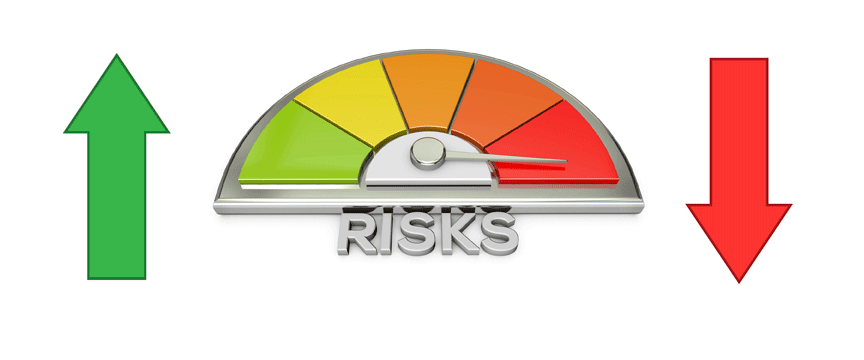
When you swing way up – the price is moving with you, higher and higher into the green zone
When you swing way back – the price is going against you lower and lower into the red zone
On the Swing-O-Meter the distance between green and red is the price range.
Swinging back and forth means that the price is constantly moving up or down.
Going up, going down, going up, going down. Sounds like the lady in my elevator.
This goes on all day long in the playground known as the stock market.
Not swinging at all or stopping by dragging your feet in the sand means the price is unchanged.
Jumping off at the high point in the swing? Time to take some gains. Otherwise known as “getting out at the top”
The challenge for any investor is to identify how much of a swing you can tolerate.
If you get nauseous or dizzy just thinking about swings, perhaps you should consider bonds. Just saying.
For an everyday investor who wants to buy stock, there are ways to minimize how much swing in your step you want.
This article is dedicated to first time buyers.
How to buy a Stock
One question I have been asked is “What if I make a mistake?”
It is an understandable question when you are doing something for the first time. As we work through placing an order you will see that there are many steps along the way to prevent you from making a mistake.
I know that the actual process of buying a stock on your own can seem like a big hurdle. I am going to show you how to get over it.
Step One:
Log in to your brokerage account.
Look for a tab or section that says “Trade” or “Trade Stocks”. It will look similar to the screen shot below.

Step Two:
Pick a company and look for the ticker symbol. You are not picking a company to invest in today. The purpose of picking a company is to try out the process of entering a trade.
Think of something you are interested in. For example, a lightbulb company. I picked General Electric for this exercise.
We have to find the ticker symbol for General Electric. You can enter the name of the company in the symbol look up section, or type “What is the ticker symbol for (name of company) in any browser and the ticker symbol will appear.
The ticker symbol for General Electric is GE.
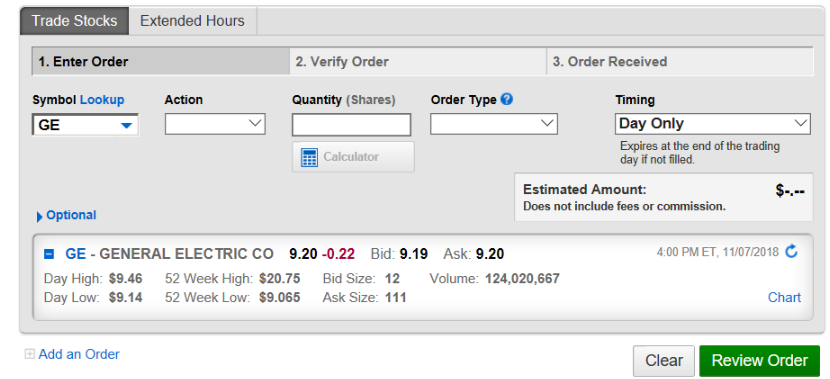
Step Three:
We need to choose an Action. For now, we are only going to choose “Buy.” Click on Buy to populate the Action box.
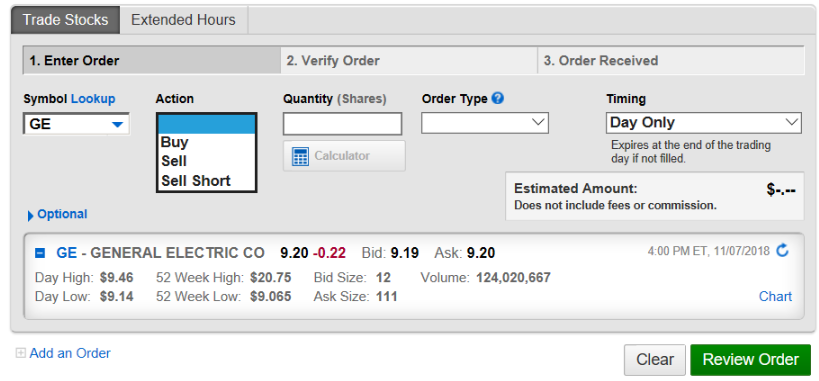
Step Four:
Enter the number of shares you are going to buy. You can buy a small number of shares to start.
If you make a mistake and enter 100 shares instead of 10 shares, you can click on Clear and start over. You are not going to accidently buy 100 shares.
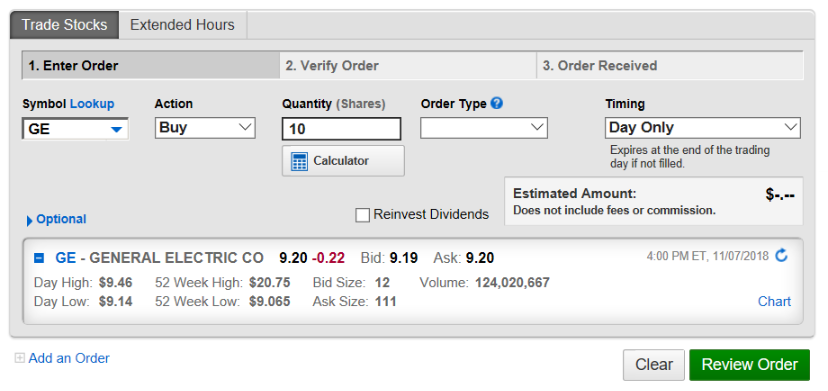
Step Five:
Choose an Order Type. For a small number of shares select Market Order.
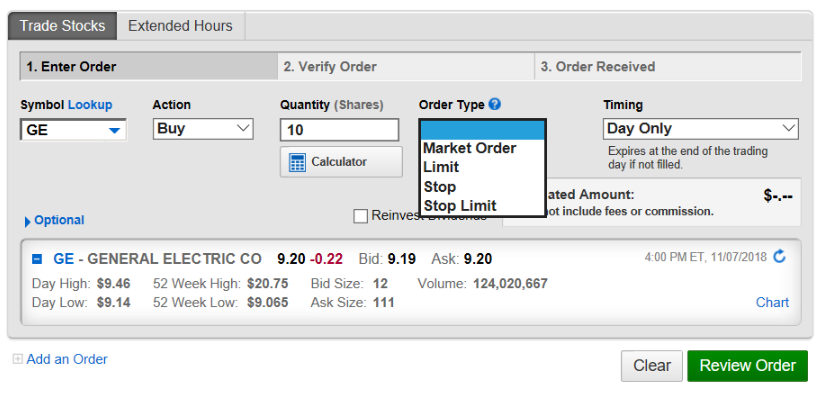
What is a Market Order?
A Market Order means you are placing an order to buy or sell shares of a company at the best price available (market price). A Market Order guarantees “execution”, meaning you will buy the stock, but does not guarantee the price.
Market orders are good for small orders or stocks where the price doesn’t change much. Market orders are not good when there are big changes in the price over the course of a day.
Price changes are typically spoken in percentages. “XYZ company is down 3% today” or
“ABC company is up 4% today”.
Regardless of the price of the stock, 3% and 4% changes in the price of a stock over the course of the day is a big swing.
What is a Limit Order?
A limit order is an order to buy or sell a stock at a price you specify. For example, you place a limit order to buy 100 shares at $10.00 per share, “or better”.
The term “or better” is a little deceiving because a better price when you are buying a stock is always a LOWER price. Paying $9.50 per share is better than paying $10.00.
When you enter a Limit Order, there is no guarantee that your order will be filled.
Once we get into Stop Orders and Stop Limit Orders, things get more complicated. For a new investor it is best to stick to a Market Order or a Limit Order.
You can find the definitions of a Stop Order and a Stop Limit Order are in the Glossary.
What is the BID?
- The BID represents the price a buyer is willing to pay for a stock.
What is the ASK?
- The ASK is the price the seller of a stock wants to receive.
The difference between the BID price and the ASK price is known as the spread.
Step Six:
Check the box to Reinvest Dividends. If the stock you are buying pays a dividend, this is a good way to accumulate more shares. With more shares you receive more dividends.
Dividends are not guaranteed. A dividend is a distribution of earnings to shareholders. Many of the technology stocks do not pay dividends. Dividends can be lowered or cut altogether.
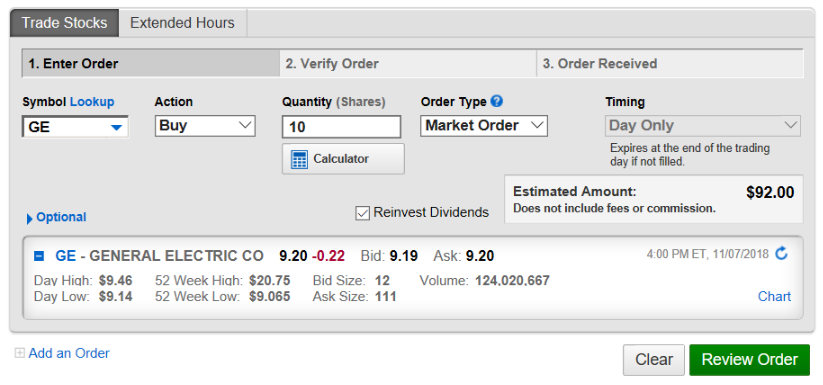
Step Seven:
Once you have selected Reinvest dividends, click the Review Order box.
Notice that the calculator is automatic. You can see the estimated cost of your trade if you place the order.
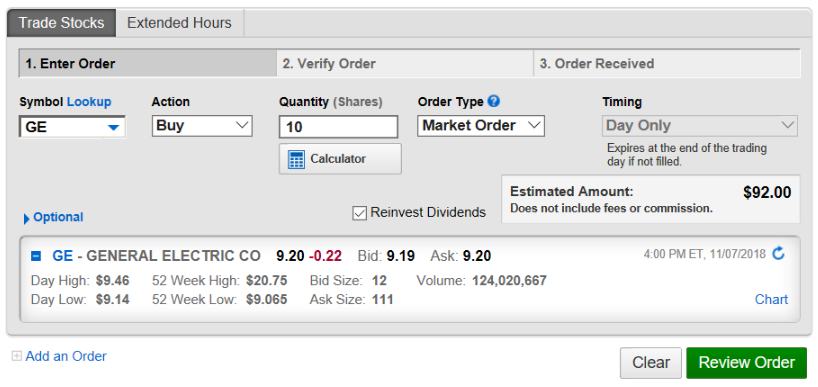
What happened? I clicked on Review Order and received an error message.
OOPS! My order cannot be placed. The reason the order cannot be placed is that I do not have enough money in my account.
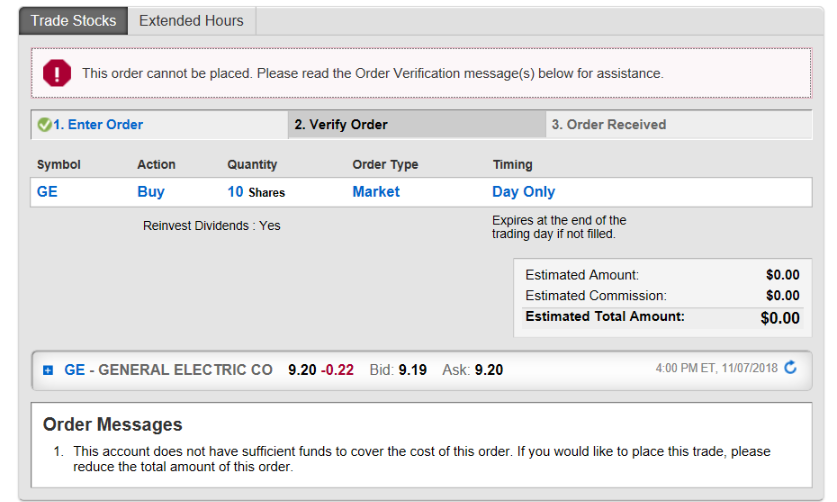
That is one way to make sure you haven’t made a mistake.
My last step is to switch to an account that has money, so you can see what the Review and Order Received look like.
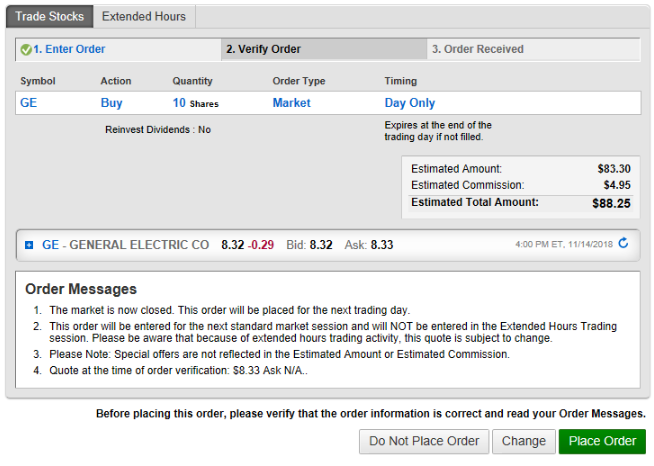
You have the option to cancel the order or to change the order.
I’m done. I have placed my order. And I forgot to check reinvest dividends! I can easily change that in my account after I buy the stock.
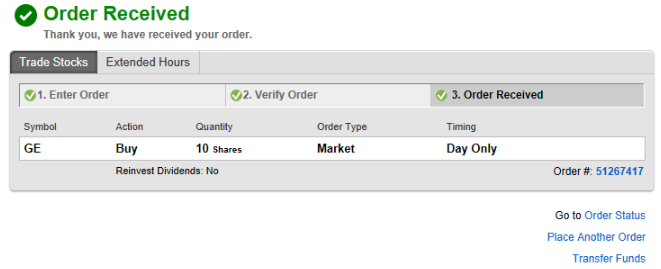
Congratulations! You have completed your first stock trade.
This website is for informational purposes only and does not constitute an offer to sell, a solicitation to buy, or a recommendation for any security, nor does it constitute an offer to provide investment advisory or other services by The Modest Economist LLC.
